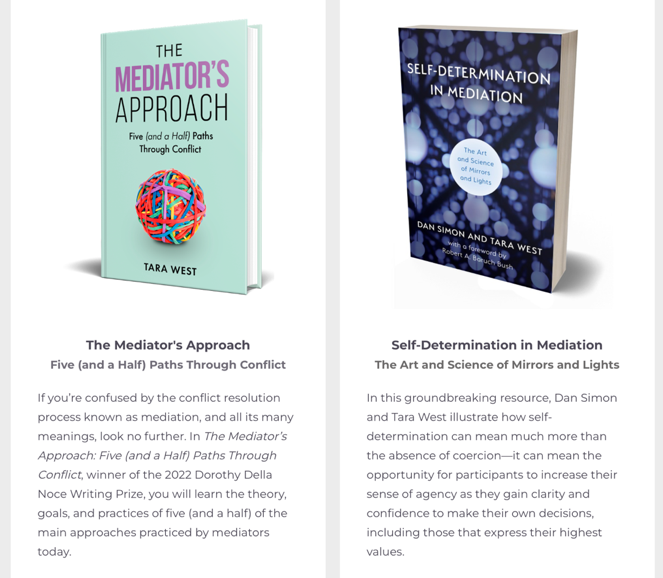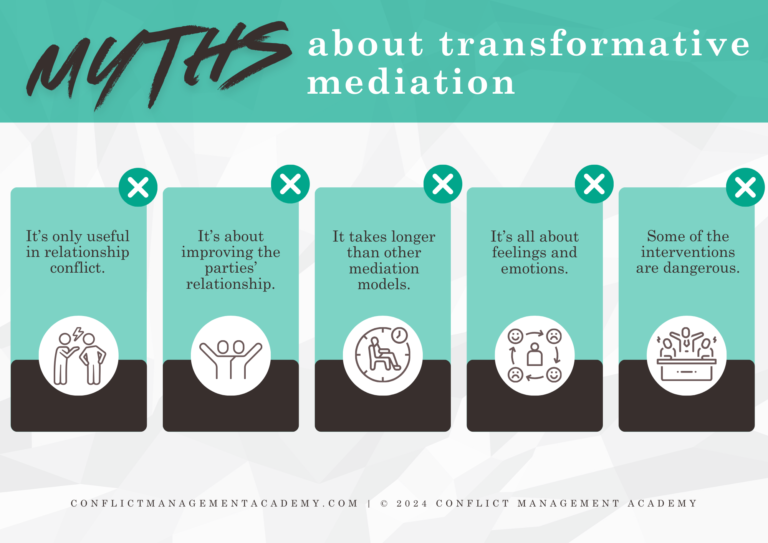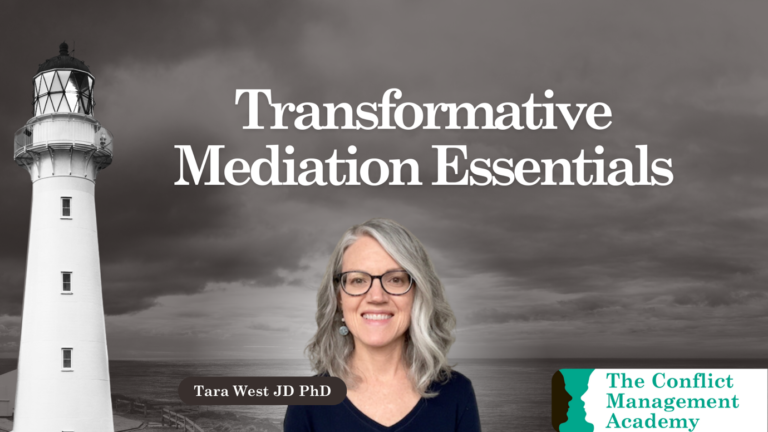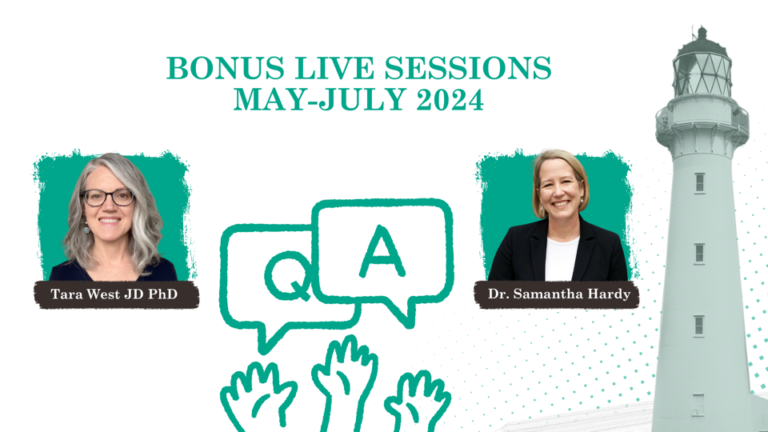Many mediators know about transformative mediation, but in my experience, not many mediators really understand it.
I was certified as a transformative mediator in 2010 (Baruch Bush was my assessor) and was approved to teach transformative mediation by the Institute for the Study of Conflict Transformation (ISCT) a few years later. Since then, I have taught transformative mediation certification courses in Australia on a couple of occasions, and I have taught Advanced and Comparative Mediation courses in various universities (and those courses have covered both transformative and narrative mediation).
I have been delighted to see the ISCT re-invigorated over the past few years, with new projects and a growing number of members and trainers. There have also been some terrific new books published, including Dan Simon and Tara West’s book: Self-Determination in Mediation: The Art and Science of Mirrors and Lights (2022). Tara West’s other book, The Mediator’s Approach: Five (and a Half) Paths Through Conflict (2021) is also excellent in the way it compares and contrasts different mediation approaches (including transformative mediation). The Conflict Management Academy is delighted to have Tara West join us to present our new course, Transformative Mediation Essentials. (More about this below)

One of the reasons I believe this course is important is that the misconceptions about transformative mediation are still pervasive in the broader mediation community. Folger and Bush commented on common misunderstandings in their 2014 article, and I still see many of these evidenced today.
It’s only useful in relationship conflict.
It’s about improving the parties’ relationship.
It takes longer than other mediation models.
It’s all about feelings and emotions.
Some of the interventions are dangerous.

One of the main misconceptions about transformative mediation is that it is only useful in close relationship conflicts. However, transformative mediation is used in all kinds of conflict, including multi-party commercial dispute with parties and legal representatives involved.
Another misunderstanding is that the aim of transformative mediation is to improve (or transform) the parties’ relationship. While relationships may improve, the focus of the transformative mediator is on the way the parties are “relating to” each other in the moment, not their relationship.
People also seem to think that transformative mediation takes longer than other models of mediation, perhaps because the transformative mediator would not try to “move the conversation forward” or stop the parties from talking about things other mediators might consider off topic. This could indeed lead to longer conversations, or parts of conversations, in the transformative approach. However, there are also certain efficiencies that come from following the parties and giving them room to have the conversation they need to have. Anecdotally, it’s been some mediators’ experience that transformative mediations take less time than other approaches. However, there’s no conclusive research on this, as of yet.
There is another misconception that transformative mediation is all about feelings and emotions, perhaps because the transformative mediator does not try to stop parties from talking about their feelings or emotions, whereas other mediators might try to redirect parties to concrete facts or problems to be solved. However, the transformative mediator would never suggest or encourage parties to talk about their feelings, emotions, or anything else for that matter. Transformative mediators follow the parties, so if the parties want to have a conversation that’s purely focused on numbers, data, or “the bottom line,” those choices will also be supported by the transformative mediator.
Regarding the belief that transformative mediation is dangerous, some mediators, especially those who set ground rules or reframe parties’ statements to remove toxicity, do find the transformative mediator’s approach quite worrying. This is likely because the transformative mediator would never set ground rules, and rather than removing toxicity, they reflect back heated statements – often using the same words and tone as the party who said them. However, the mediator will have explained their approach to the parties prior to mediation and obtained their informed consent, so parties have a choice about participating on this basis. Also, if at any time during the mediation a party is uncomfortable about the way the conversation is taking place, the mediator will support them to ask for what they need instead. This may include setting a ground rule, but the party would set the rule, not the transformative mediator. It’s also worth noting that these heated reflections happen in the context of the full transformative approach, and are supported by other practices used by the transformative mediator. If certain practices were used out of context, they could in fact be dangerous, and therefore it’s important to be cautious when it comes to using practices from more than one approach at a time.
Understanding these misconceptions can help in appreciating the potential benefits of transformative mediation in various conflict situations.
If you would like to know more about transformative mediation, we recommend you have a look at our new online course Transformative Mediation Essentials, presented by Tara West.

This course goes beyond a mere introduction and digs deeper into both the theory and practice of the transformative mediator. It also includes a conversation about how to integrate the transformative approach into your own practice if you’re not yet (or ever!) ready to go “all in.”. It also provides different ways of thinking about the mediator’s role that can help your reflective practice, whichever model you use.
Tara also explains how a transformative mediator introduces the process to the parties, approaches one-on-one conversations, and works with lawyers and support people.
Tara addresses some of the main misconceptions about transformative mediation in more detail than discussed above, and she answers questions about transformative mediation from mediators trained in the facilitative model.

And as a special bonus, from May through July of 2024, Tara and Sam will be offering monthly live Q&A’s so that you can get your questions answered as you apply what you’re learning in the course. We did our best to accommodate different time zones and schedules so everyone could attend at least one session, but you’re welcome to come to as many as you like! These will also be recorded for students who can’t attend live.
https://conflictmanagementacademy.com/transformative-mediation-essentials/
